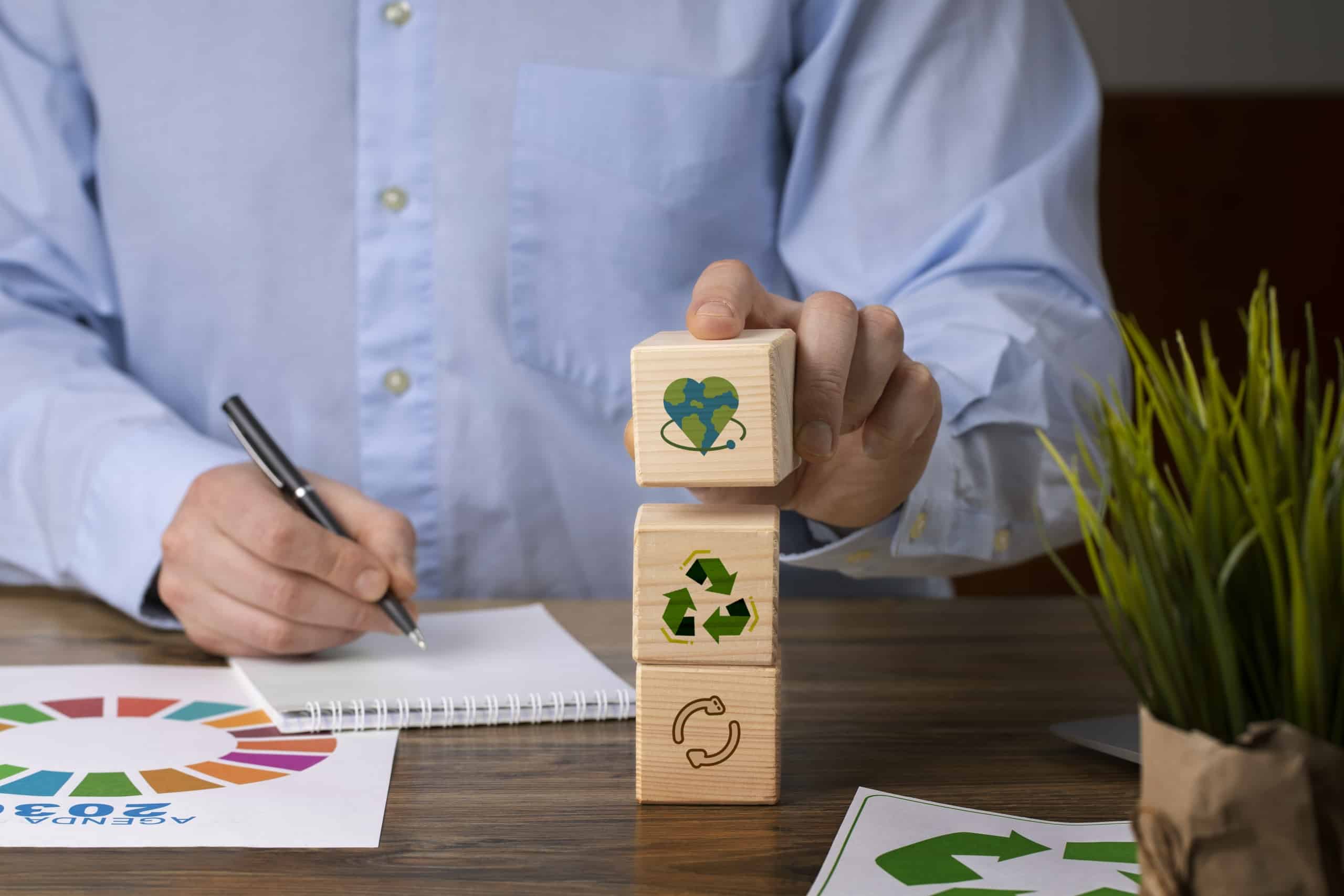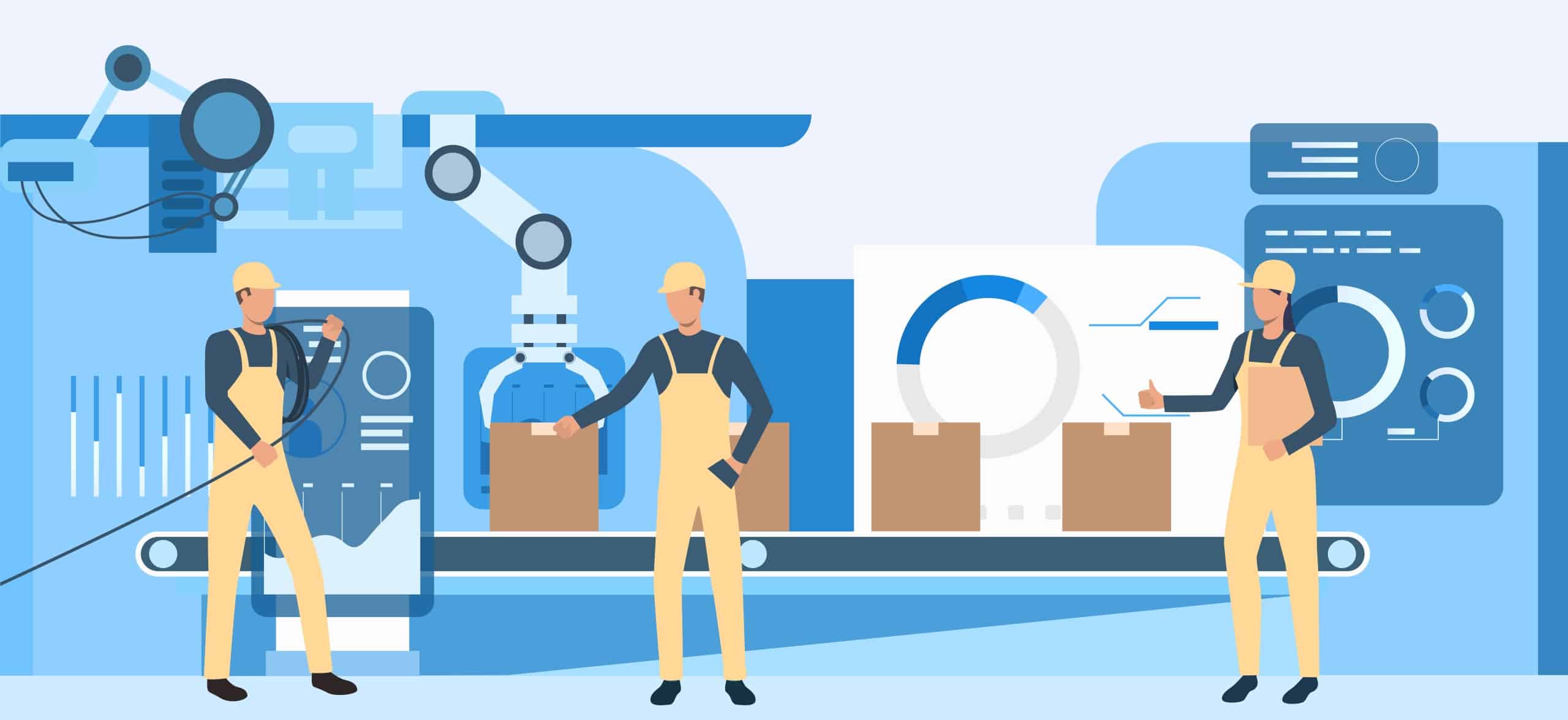The Hidden Environmental Costs of Wet Wipes
The popularity of disposable wet wipes has significantly increased because of their convenience and versatility. Nevertheless, hidden under their convenient appearance is a substantial ecological impact that is sometimes overlooked. The life cycle of a wet wipe, from its manufacturing to its ultimate disposal, encompasses many phases that significantly contribute to environmental deterioration.
Manufacturing and Utilization of Resources
The manufacturing of wet wipes requires substantial resources. Conventional wet wipes are often composed of a combination of natural and synthetic fibers, which may include polymers manufactured from petrochemicals. This manufacturing method entails significant water and energy consumption, hence contributing to its carbon footprint. In addition, the extraction and processing of raw materials result in environmental disruptions, such as the clearing of forests for plant-based fibers and the release of pollutants during chemical manufacture.
Chemical Components and Health Impacts
Wet wipes are saturated with chemical solutions to improve their effectiveness in cleaning and to prolong their storage time. These treatments often include preservatives, perfumes, and other compounds that have the potential to be detrimental to the environment. Improper disposal of wet wipes may result in the release of chemicals into soil and water systems, leading to pollution and presenting threats to wildlife and human well-being. Microplastics found in several wet wipes also contribute to enduring environmental harm, since these little particles remain in ecosystems for years.
Disposal Challenges
The proper disposal of wet wipes is a substantial difficulty. Although wet wipes are advertised as flushable, they often do not break down rapidly when exposed to water. When they are flushed, they have the potential to produce significant obstructions in sewage systems, resulting in expensive repairs and detrimental effects on the environment. Conventional wet wipes, when disposed of in landfills, have a slow decomposition process that spans many years, hence exacerbating the issue of plastic pollution. Although biodegradable wipes represent a step forward, they still need specialized conditions to decompose well, which are frequently not present in regular waste settings.
Effects on Marine Life
Improperly discarded moist towelettes may enter waterways and seas, posing a danger to marine organisms. Marine organisms have the potential to consume wet wipes or get ensnared by them, resulting in harm or death. The presence of wet wipes and other plastic garbage in marine settings causes disturbances to ecosystems and has detrimental effects on the ocean’s health.
The ecological impacts of wet wipes are substantial and diverse, impacting several facets of our ecosystem across the whole lifecycle, from manufacturing to disposal. To tackle these concealed expenses, a blend of inventive production techniques, consumer enlightenment, and conscientious disposal approaches is necessary. Through comprehending and alleviating the ecological consequences of wet wipes, we may adopt more sustainable alternatives and actively contribute to the well-being of our world.
Production Footprint
The production impact of wet wipes spans the whole life cycle of manufacture, starting with the extraction of wet wipes raw materials to the finished product that is ready for consumer use. This procedure entails significant use of resources and has a notable environmental footprint, both of which are often undisclosed to the final consumer.
Extraction of raw materials
The wet wipe production process starts with the procurement of raw materials. Conventional wet wipes are composed of a mixture of organic fibers, such as cotton or wood pulp, and artificial fibers like polyester or polypropylene. The extraction of these natural fibers often entails the clearance of forests and the exhaustion of water supplies. For example, cotton production is well-known for its high water consumption and heavy dependence on pesticides and fertilizers, resulting in soil deterioration and water contamination. Conversely, the manufacturing of synthetic fibers necessitates the use of petrochemicals, which are derived from the oil sector. The extraction and processing of these petrochemicals emit greenhouse gases and other pollutants into the environment.
Production Procedure
The production process of wet wipes requires a significant amount of energy. The process has many steps, including fiber manufacturing, nonwoven fabric manufacture, chemical treatment, and packing. Each of these processes requires substantial energy, mostly derived from non-renewable sources, which contributes to the total carbon footprint. The use of large-scale machinery and industrial equipment increases energy consumption. In addition, wet wipes undergo a chemical treatment process where different solutions are used to infuse them with washing capabilities. If not adequately handled, these chemicals, which are often synthetic, may have detrimental environmental impacts.
Water consumption
Water is a vital resource that is extensively used in the manufacturing of wet wipes. Water is an essential element at every stage of the production process, from cultivating natural fibers such as cotton to the actual manufacturing processes. The textile sector, which encompasses the manufacturing of nonwoven textiles used in wet wipes, is a major user of freshwater resources. The excessive use of water exacerbates the depletion of freshwater reserves, particularly in areas already grappling with water shortages. In addition, the wastewater produced during the manufacturing process may include contaminants and chemicals that, if not adequately handled, have the potential to harm nearby water sources.
Chemical use and discharges
Wet wipes undergo treatment with a variety of chemicals to improve their performance, such as preservatives, scents, and cleaning agents. The manufacturing and use of these compounds produce emissions that have the potential to contribute to both air and water pollution. Chemical processing releases volatile organic compounds (VOCs) which may result in the creation of ground-level ozone, a toxic air pollutant. In addition, the act of disposing of wastewater that contains chemicals may introduce harmful compounds into the environment, which can hurt aquatic life and ecosystems.
Packaging and distribution
The last phase of the wet wipes manufacturing process is the packaging and distribution of the product. Wet wipes are often enclosed in plastic packaging, which is produced from fossil fuels and adds to the problem of plastic pollution. Manufacturing plastic packaging requires extra energy use and results in the release of pollutants. After being packed, the wet wipes are transferred to other markets, using logistics and transportation networks that primarily depend on fossil fuels. The distribution procedure contributes to the total carbon footprint of the product.
The manufacturing impact of wet wipes is vast and has substantial environmental consequences. From the extraction of raw materials to the manufacturing processes, water use, chemical treatments, and packaging, every step of the process adds to the depletion of resources and pollution. To lessen the effects of these externalities, manufacturers could use more sustainable methods, including the utilization of environmentally friendly materials, the reduction of water and energy consumption, and the minimization of chemical usage. Consumers may contribute by selecting goods from firms that are dedicated to sustainability and supporting regulations that encourage eco-friendly production methods.
Innovations in Sustainable Manufacturing
The wet wipes sector is progressively embracing sustainable production processes to alleviate its environmental footprint. These innovations include a wide range of manufacturing elements, including resource procurement and waste management, and are essential for enhancing the industry’s environmental friendliness and sustainability.
Biodegradable and Plant-Based Materials
A notable progress in sustainable manufacturing is the transition towards biodegradable and plant-derived materials. Conventional wet wipes often include artificial fibers made from petrochemicals, which need a long time to break down and add to the problem of plastic pollution. On the other hand, biodegradable materials like bamboo, organic cotton, and viscose made from wood pulp provide a more environmentally friendly option. These materials undergo rapid decomposition in natural surroundings, hence minimizing their long-term environmental footprint. Wet wipes manufacturers are progressively allocating resources to these sustainable fibers to fabricate ecologically friendly wet wipes that specifically target environmentally aware customers.
Water-Saving Technologies
Water is an essential resource in the manufacture of wet wipes, and prioritizing its conservation is crucial for sustainable production. Advancements in water-conservation technology, such as closed-loop water recycling systems, have made substantial progress in decreasing water use. These systems enable firms to recycle and reuse water throughout the manufacturing process, therefore limiting the need for new water and decreasing the discharge of wastewater. Manufacturers may greatly reduce their water use and associated expenses by adopting these technologies, which also have a positive impact on the environment.
Energy Efficiency and Renewable Energy
Minimizing energy use and transitioning to renewable energy sources are crucial elements of sustainable production. The manufacture of wet wipes is characterized by high energy consumption since it involves operations that need substantial quantities of power and fuel. In response to this issue, wet wipes manufacturers are embracing energy-efficient technologies and practices, including streamlining production lines, using energy-efficient equipment, and installing intelligent energy management systems. In addition, incorporating renewable energy sources, such as solar and wind power, aids in decreasing the environmental impact of industrial activities by reducing their carbon footprint. Wet wipes manufacturers may reduce their greenhouse gas emissions and promote sustainability by allocating resources to energy efficiency and renewable energy investments.
Eco-Friendly Chemical Alternatives
The utilization of chemical substances in wet wipes, encompassing preservatives, scents, and cleaning agents, presents potential hazards to both the environment and human health. In response to this issue, producers are now working on creating environmentally acceptable chemical substitutes that are both non-toxic and capable of being broken down naturally. Substituting synthetic chemicals with natural preservatives, essential oils, and plant-based surfactants is now being implemented. These alternatives not only mitigate the environmental consequences but also attract customers who are looking for safer and healthier goods. Wet wipes manufacturers may achieve the dual goals of efficacy and environmental friendliness by giving priority to the use of natural and sustainable components in the production of wet wipes.
Sustainable Packaging Solutions
The importance of packaging is essential in determining the environmental impact of wet wipes. Conventional plastic packaging exacerbates plastic pollution and often lacks recyclability. Wet wipes manufacturers are now investigating sustainable packaging options, including biodegradable, compostable, and recyclable materials. The use of paper-based materials or bioplastics derived from renewable resources in package design contributes to the mitigation of environmental consequences. In addition, several corporations are adopting minimalist package designs to minimize the use of materials and eliminate waste. Wet wipes manufacturers may greatly reduce the total environmental impact of their products by using sustainable packaging.
Waste Reduction and Circular Economy
Wet wipes manufacturers are prioritizing waste reduction and resource efficiency as they adopt the ideas of the circular economy. This entails the creation of goods and methods that limit the production of waste and encourage the reuse and recycling of resources. For example, several wet wipes manufacturers are now working on creating reusable wet wipe systems, which allow users to buy reusable cloth wipes and refillable solution containers. In addition, the implementation of take-back programs for old wipes and packaging promotes recycling and appropriate disposal. Wet wipes manufacturers may enhance the sustainability and efficiency of their manufacturing cycle by using circular economy principles.
The wet wipes sector is being revolutionized by advancements in sustainable manufacturing, resulting in increased environmental responsibility and alignment with worldwide sustainability objectives. Wet wipes manufacturers are effectively minimizing their environmental footprint by using biodegradable materials, water-conserving technology, energy-efficient methods, environmentally safe chemicals, sustainable packaging, and circular economy ideas. These technological breakthroughs not only have a positive impact on the environment but also cater to the increasing customer demand for sustainable goods. As the industry progresses, the possibility of achieving a more sustainable and environmentally friendly future for wet wipes becomes more feasible.
Consumer Responsibility and Awareness
Wet wipes manufacturers have a vital role in minimizing the environmental effects of wet wipes, but customer responsibility and understanding are as significant. Informing customers about the ecological impact of their choices and promoting sustainable habits may greatly help reduce environmental damage. Consumer responsibility and knowledge may have a significant impact in many critical areas.
Effective Waste Management Techniques
An urgent concern about wet wipes is the incorrect disposal of these products. A common misconception among customers is that all wet wipes are flushable, which may result in significant obstructions in sewage systems and environmental degradation. To address this issue, it is crucial to provide customers with education on appropriate methods of disposing of waste. Wet wipes should be disposed of in the garbage instead of being flushed, regardless of whether they are labeled as flushable. Effective labeling on products and public awareness initiatives may facilitate the spread of this information. Properly disposing of moist towelettes may help customers avoid plumbing problems and alleviate the burden on waste management systems.
Selecting Sustainable Products
Consumers can influence the demand for environmentally-friendly items via their choices when making purchases. Consumers may minimize the environmental consequences linked to conventional synthetic wipes by opting for wet wipes crafted from biodegradable and plant-derived substances. Furthermore, choosing goods that use natural and non-toxic chemicals helps reduce the occurrence of chemical contamination. Wet wipes manufacturers that place high importance on sustainability often provide clear information about the resources they use and how their products are made, enabling customers to make well-informed decisions. Consumers may promote the adoption of more sustainable practices in the business by endorsing eco-friendly companies.
Minimizing Consumption
Another crucial element of consumer accountability is minimizing the total use of disposable wet wipes. Although wet wipes are handy, they are often overused and used for jobs that may be completed with reusable alternatives. Consumers might restrict their utilization of wet wipes to necessary circumstances and embrace reusable cloths or towels for routine cleaning duties. This transition not only reduces waste but also decreases the need for throwaway items, stimulating producers to develop and provide more environmentally friendly alternatives.
Engaging in Recycling Initiatives
Consumer engagement in recycling programs is essential for the recycling of both wet wipes and their packaging, provided that they are recyclable. Several cities have recycling programs for certain categories of garbage, which may include certain varieties of plastic packaging. Through the appropriate categorization and recycling of wet wipe packaging, individuals may actively contribute to waste diversion from landfills and promote the preservation of resources. Furthermore, endorsing wet wipes manufacturers that provide take-back or recycling initiatives for their goods might amplify recycling efforts.
Disseminating Awareness
Consumers may also contribute to raising awareness about the ecological consequences of wet wipes and advocating for sustainable behaviors. Disseminating information via social media, actively participating in neighborhood clean-up initiatives, and engaging in debates about sustainability may effectively enhance awareness. Well-informed customers have the ability to have an impact on their peers and communities, encouraging the adoption of environmentally conscious behaviors. Supporting groups that focus on sustainability problems and advocating for improved environmental legislation may contribute to driving systemic change.
Consumer accountability and awareness are crucial elements in tackling the ecological consequences of wet wipes. Consumers may have a substantial impact by engaging in responsible waste management, selecting environmentally-friendly items, minimizing their consumption, actively participating in recycling initiatives, and raising awareness. The sustainable attempts of producers may be enhanced by the collective efforts of educated and responsible customers, resulting in a more ecologically conscious future for wet wipes and other throwaway items.





